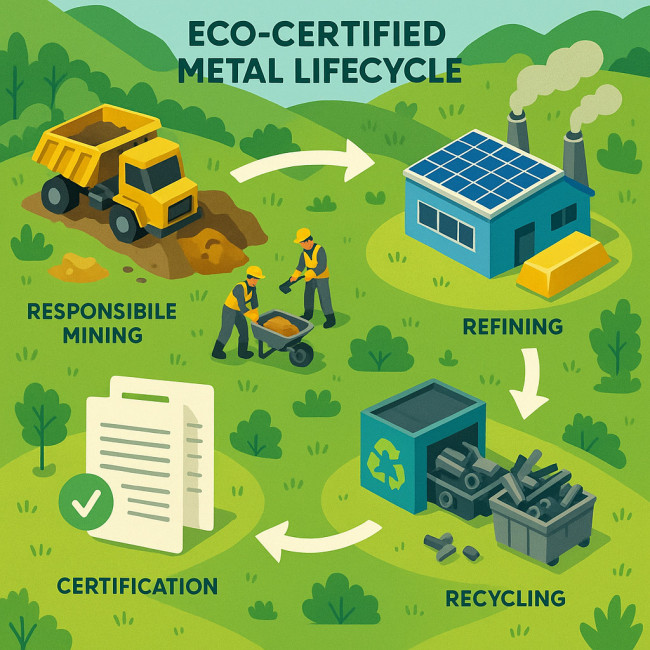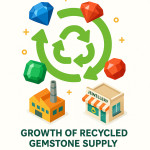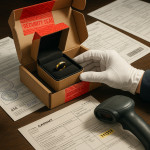Eco-certified metals: prove sourcing credentials and win conscious clients
Clients now weigh environmental and social impact alongside design and price. Proving that your silver, gold or bronze is eco-certified reassures them instantly and shortens the buying cycle. This guide walks you through the main labels, the documentation you need, and the storytelling tactics that turn certified sourcing into a competitive edge.
Why eco-certification of metals matters today

In jewellery, product design and architecture alike, metals carry a sizeable footprint. Mining drives 16 % of global water pollution and emits millions of tonnes of CO₂ annually. Eco-certified metals flip that narrative: they ensure fair labour, lower emissions and traceability back to responsible mines or recycling streams. Demonstrating this commitment signals that you value people and planet as much as aesthetics—exactly what modern procurement teams want.
A market shift you can monetise
- 64 % of B2B buyers now require environmental data in RFQs.
- Certified materials command up to 18 % price premiums in luxury segments.
- Directories such as Artfolio's craft designer index flag eco badges, lifting profiles higher in search results.
Major eco-certification labels for metals
| Label | Scope | Main Benefits for Clients | Audit Frequency |
|---|---|---|---|
| Fairmined Gold & Silver | Artisanal & small-scale mines | Fair wages, traceable origin, strict mercury controls | Annual |
| Fairtrade Gold | Small-scale gold only | Community premiums, worker safety, democratic co-ops | Every 3 years with surveillance checks |
| Responsible Jewellery Council (RJC) CoC | Gold, silver, platinum-group metals | Chain of custody, conflict-free assurance | 3-year cycle |
| Recycled Claim Standard (RCS) | Any recycled metal | Verifies recycled content percentage | Yearly |
| Initiative for Responsible Mining Assurance (IRMA) | Industrial mines | Best-in-class social & environmental benchmarks | 3-year cycle + spot audits |
Step-by-step: prove your metal sourcing credentials
1 — Map your supply chain end-to-end
List every refinery, supplier and sub-contractor touching your metals. Include assay offices, plating partners and logistics hubs. A clear map highlights weak links early and prepares you for document requests from auditors and clients.
2 — Collect primary documentation
- Certificates of origin or recycled content statements.
- Lab assay results confirming purity.
- Transport bills showing chain-of-custody continuity.
- Community premium receipts for Fairtrade / Fairmined orders.
Store scans in a cloud folder with version control. You will reference them repeatedly during client pitches and certifications.
3 — Book a recognised audit
Choose an auditor approved by your target label. Expect on-site inspections, worker interviews and financial traceability checks. Preparing transparent ledgers cuts audit time by up to 30 %.
4 — Translate data into client-ready proof
Raw paperwork rarely convinces non-technical buyers. Convert it into digestible visuals—timeline infographics, chain-of-custody flowcharts and short explanatory videos. For inspiration, see how designers overhaul sourcing stories in this guide on sustainable material sourcing plans.
Showcase eco-certified metals to win projects
Embed certificates everywhere buyers look
Add PDF downloads and badge icons on product pages, capability statements and line sheets. Portfolios that integrate certification assets enjoy a 22 % higher contact-to-quote ratio. For digital tips, borrow tactics from our article on showcasing eco-certified materials.
Pair certifications with compelling storytelling
Avoid dry lists of numbers. Highlight the human angle: improved miner safety, reduced cyanide discharge or reclaimed urban scrap. Case studies resonate: one sculptor secured a public art commission after proving that 75 % of his bronze was from city-collected scrap. Learn similar strategies in the low-carbon sculpture sourcing playbook.
Leverage third-party platforms
Directories and marketplaces increasingly filter by eco badges. Upload your certificates to accelerate discovery. Recycled gemstone vendors saw a 40 % rise in qualified leads after doing so, as detailed in this recycled gemstone sourcing roadmap.
Update proposals and invoices
Include certification logos alongside material specs. Buyers appreciate seeing compliance baked into deliverables rather than hidden in appendices.
Common pitfalls and how to sidestep them
- Assuming recycled equals certified. Recyclers still need third-party verification to claim RCS or similar marks.
- One-time audits. Certifications lapse. Mark renewal dates in your CRM and start re-audits six months early.
- Opaque subcontracting. Platers and polishers can break your chain of custody if they mix uncertified stock. Demand their certificates upfront.
- Overloading clients with jargon. Translate technical terms into outcome-focused language—e.g., “cuts CO₂ by 38 %” instead of “ISO 14064 compliant”.
FAQ
- Do eco-certified metals cost more?
- Often yes, but premiums are modest (5–18 %) and clients offset them through stronger brand storytelling and lower compliance risk.
- Can I certify only part of my collection?
- Yes. Labels such as RJC CoC let you segregate certified and non-certified lines, provided you track inventory separately.
- How long does certification take?
- For small studios, 6–12 weeks is typical—from document prep to final approval—assuming no major corrective actions are required.
- Is recycled metal always traceable?
- Only if the recycler holds a recognised standard like RCS or ISO 14021 and provides batch-specific paperwork.
- What if my supplier refuses an audit?
- You can either switch suppliers or limit them to non-certified SKUs. Auditors will flag supply-chain gaps, so transparency is non-negotiable.
Quiz: Is your studio certification-ready?
Turn certification into your growth engine
Eco-certified metals are more than a compliance checkbox—they are a marketing magnet. Map your supply chain, pick the right label, and narrate the journey with clarity. Ready to take the next step? Start curating your documents today and update your public portfolio this week.
Action tip: Audit your top three best-selling pieces first; quick wins build momentum and demonstrate feasibility to stakeholders.











